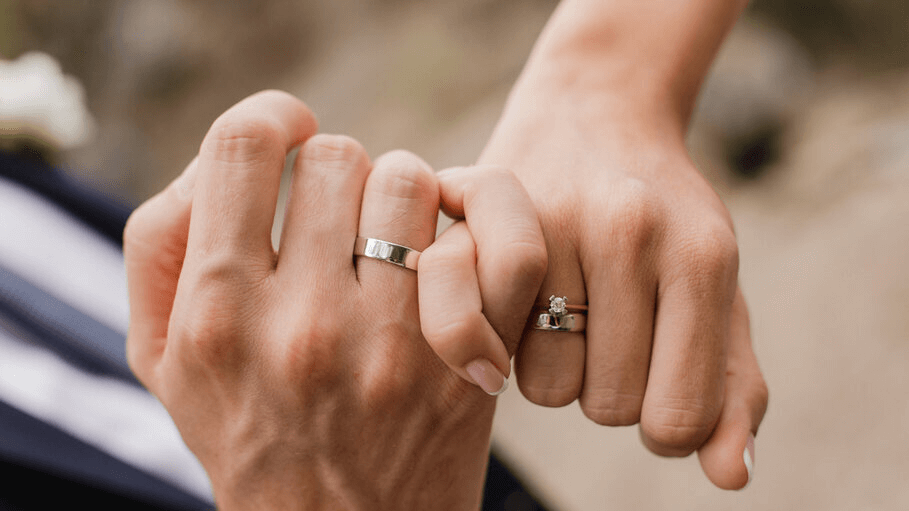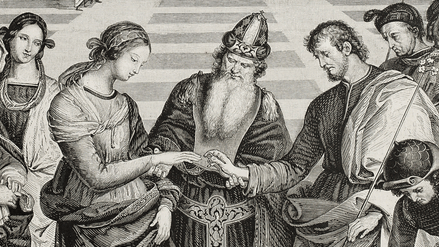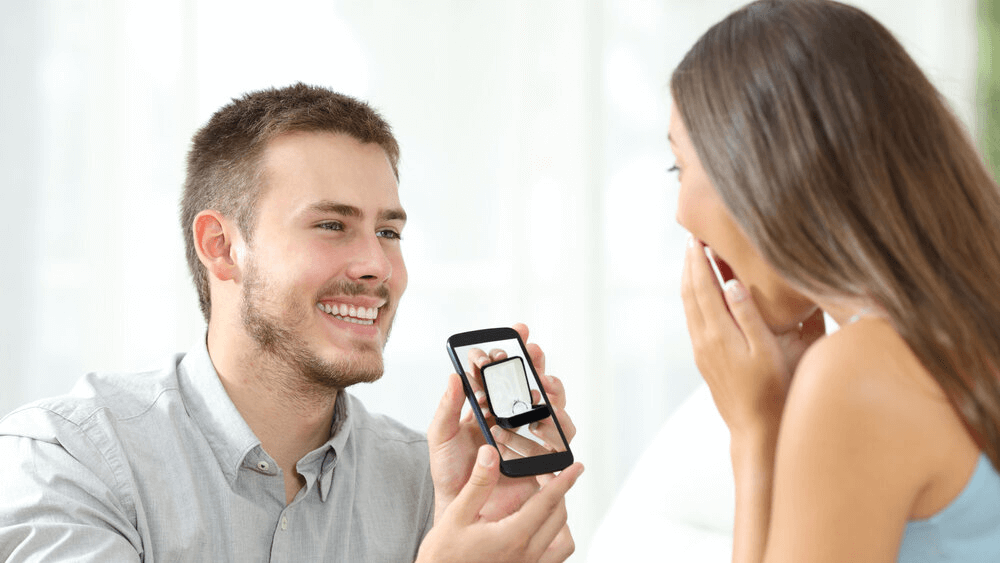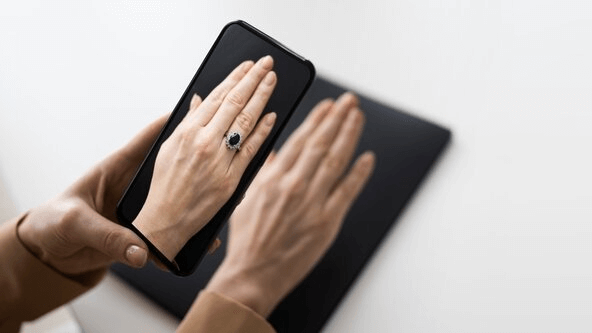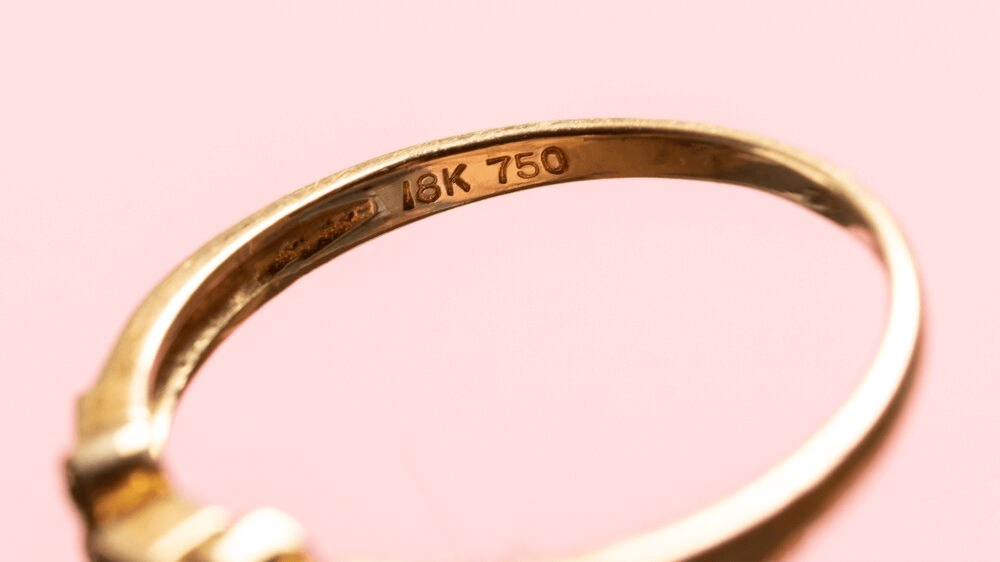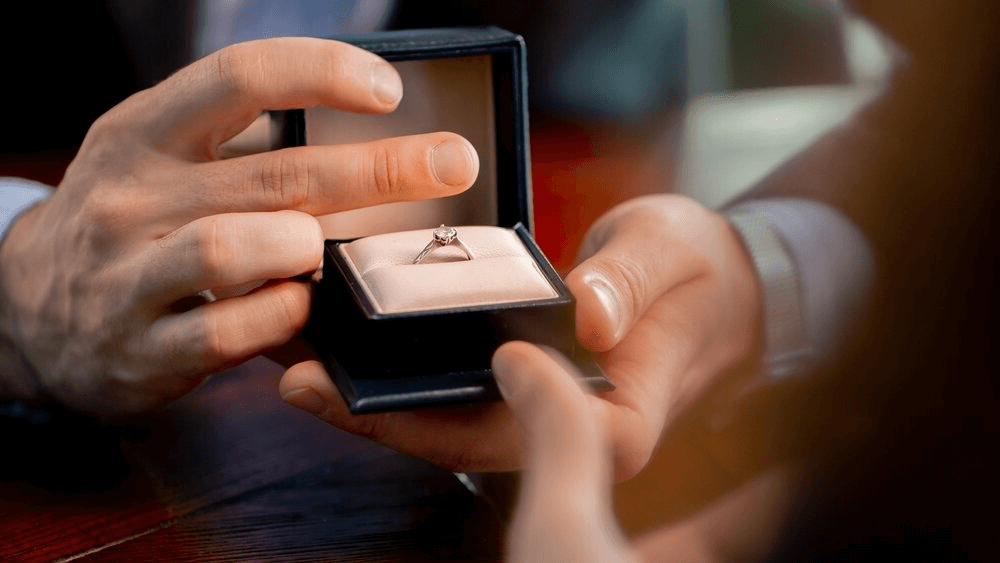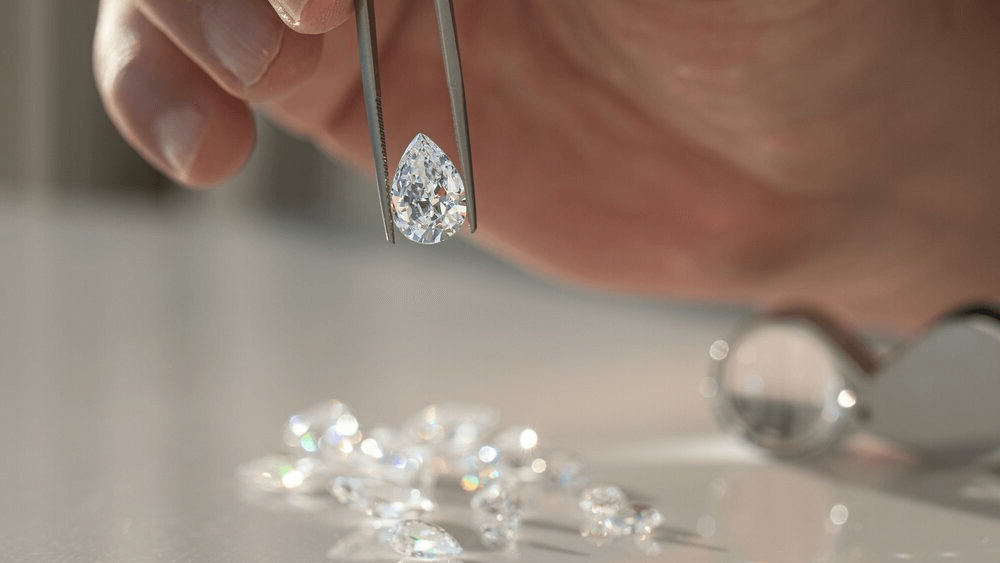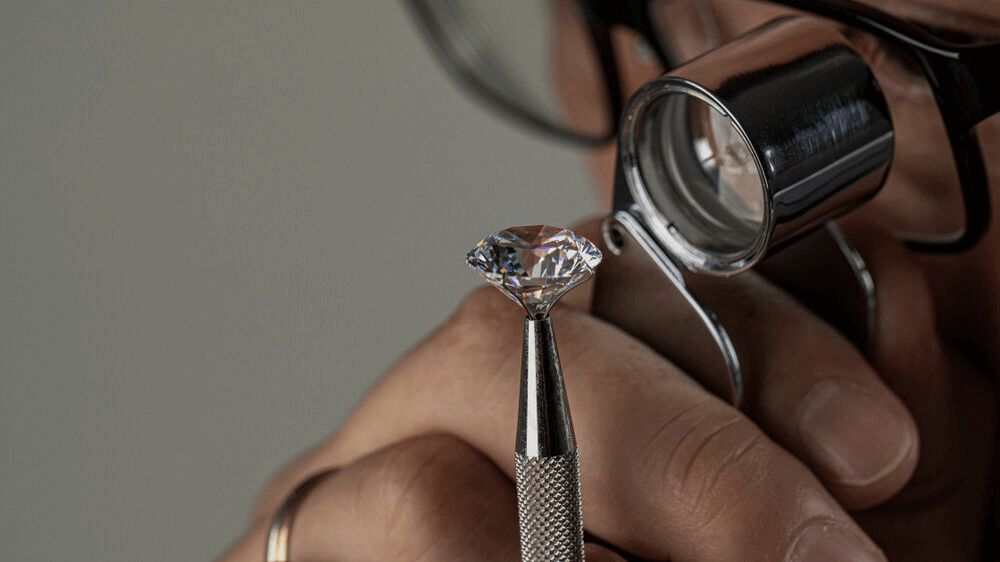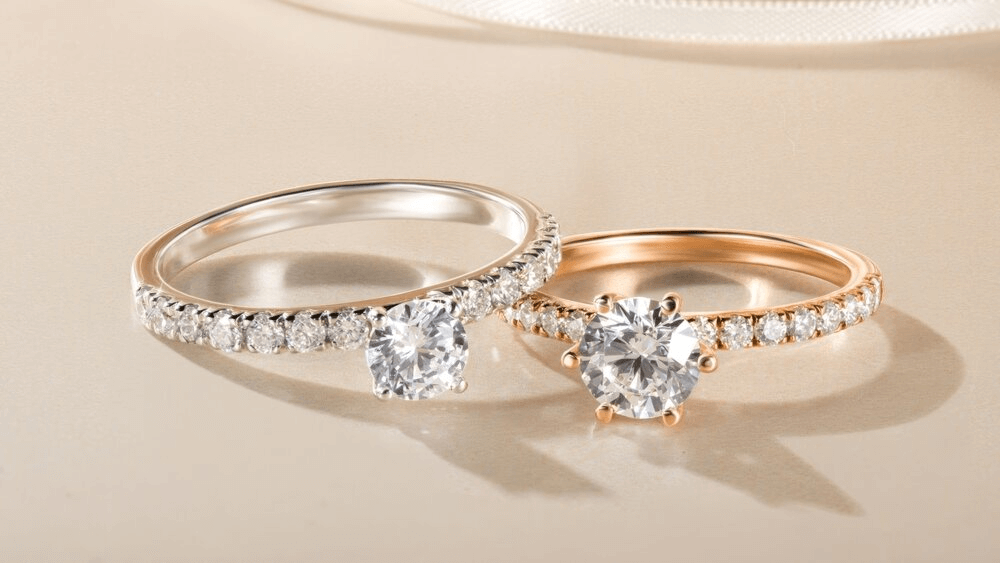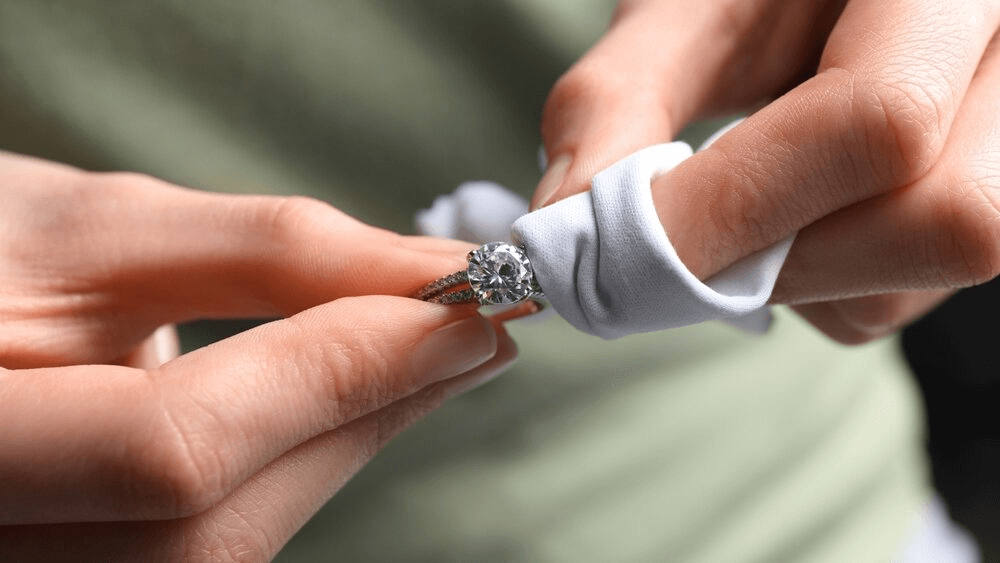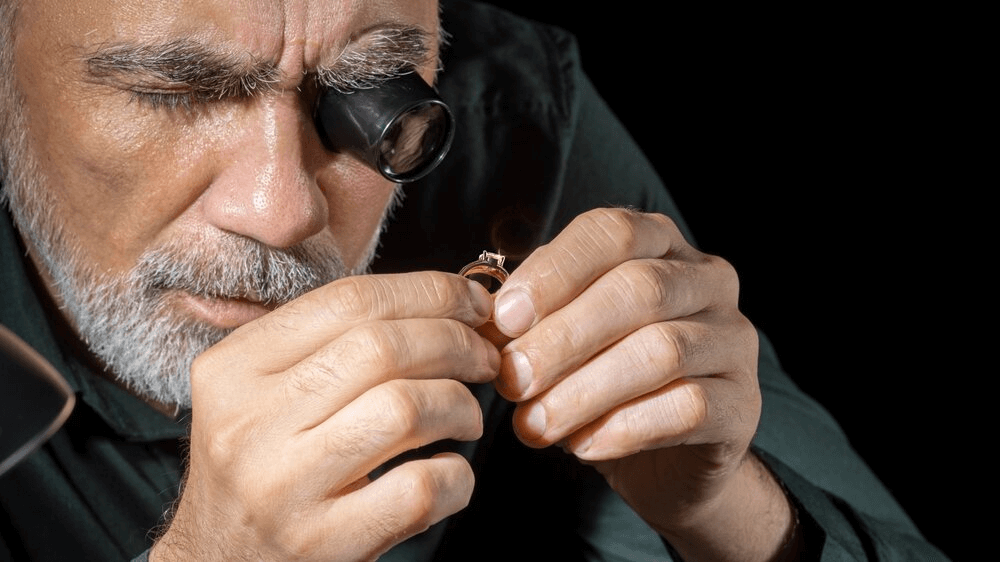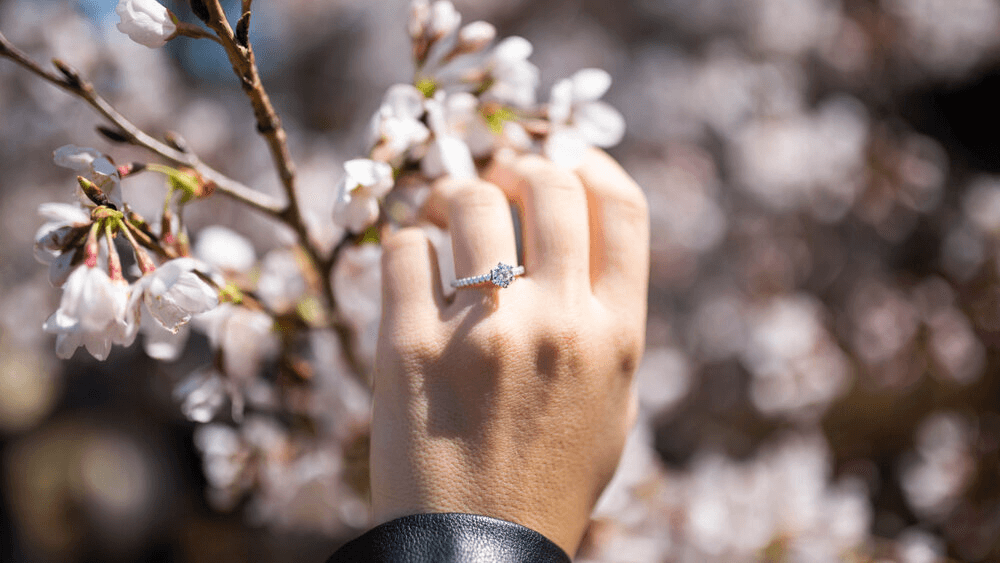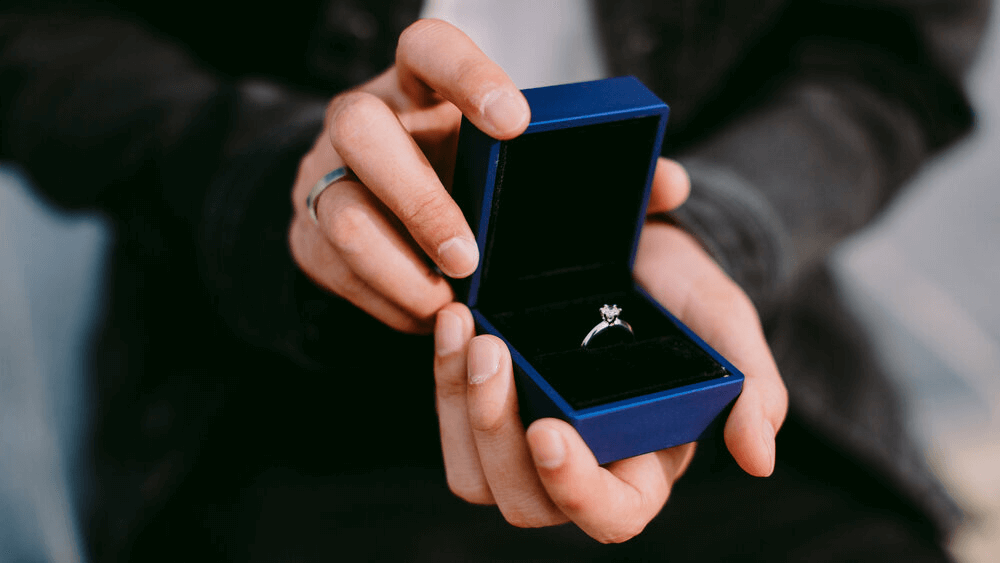What Hand Should You Wear Your Engagement Ring on?

By Gary A.

Edited by Olivia H.
Published Aug 8, 2022
Edited on Mar 31, 2025
When choosing what hand and finger do you wear your engagement ring on, it’s essential to consider both tradition and personal preference to make the perfect statement.

Navigate This Guide:
- 7 Quick Tips for Buying a Diamond Engagement Ring and Examining Engagement Ring Hand and Finger
- Introduction to the Correct Hand and Finger to Wear Your Ring
- Historical Significance of Engagement Rings
- The Story Behind the Left Hand
- Dispelling Misconceptions About Wearing Engagement Rings
- Embracing Diversity in Engagement Traditions
- Wearing Your Engagement Ring After the Wedding
- The Traditions for Men Wearing Wedding Rings
- Breaking Traditions: Wearing Your Engagement Ring On a Chain
- Our Expert Take
- 8 FAQs
Before we dive deeper into the specifics, here are some practical tips to help guide your decision-making process:
7 Quick Tips for Buying a Diamond Engagement Ring and Examining Engagement Ring Hand and Finger
- Tip 1: Understanding Finger Shape and Size Tip:
Consider the shape and size of the finger when selecting a ring. Long, slender fingers might suit elongated diamond shapes like oval or marquise, while shorter fingers may benefit from wider bands and round or princess-cut diamonds. - Tip 2: Ring Setting and Hand Proportions Tip:
Choose a ring setting that complements the hand’s proportions. A delicate setting might be lost on larger hands, while an overly elaborate setting could overwhelm smaller hands. - Tip 3: Balancing Ring Size with Lifestyle Tip:
Match the ring size with the wearer’s lifestyle. For someone active or hands-on, a more secure, low-profile setting like a bezel might be ideal to prevent snagging and provide comfort. - Tip 4: Considering Dominant Hand Factors Tip:
Remember the dominant hand when choosing the ring. If the wearer is left-handed, a sturdier design may be necessary to withstand extra wear and tear. - Tip 5: Analyzing Skin Tone and Metal Choice Tip:
Select a metal that flatters skin tone. Cooler skin tones often pair well with white gold or platinum, while warmer skin tones may be complemented by yellow or rose gold. - Tip 6: Assessing Practicality and Comfort Tip:
Ensure the ring is practical and comfortable for daily wear. Consider factors like ease of cleaning, maintenance requirements, and how the ring interacts with other jewelry. - Tip 7: Aligning with Personal Style and Preferences Tip:
Align the ring choice with personal style and preferences. The ring should not only fit the finger but also reflect the wearer’s personality and everyday style, ensuring it feels as good to wear as it looks.
Now that you’ve got these practical tips, use Jeweler AI below to find the perfect engagement ring that suits your style and budget:
Introduction to the Correct Hand and Finger to Wear Your Ring
Something old, something new, something borrowed and blue – a penny in the bride’s shoe – charms in the wedding cake – there are more rituals and traditions for couples to follow than there are hours in the day, and, for most of us, preparing to get married means cherry picking which traditions we want, such as deciding what hand do you wear your engagement ring onand which traditions we just can’t commit to.
The proposal is also pretty bound-up in its own traditions. Going down on one knee is the obvious one – and, no matter how many guys would prefer to stand or sit or, really, do anything other than sink down into that unnatural pose, the ritual seems to be stuck pretty fast to our expectations of that big day.
The next (seemingly) unbreakable tradition? Putting that ring on the right finger. Yep – that’s right – apparently buying an engagement ring isn’t enough. Next, you’ve got to get all your words out and remember which of those ten digits the band needs to be slipped onto.
Here’s everything you need to know.
Historical Significance of Engagement RIngs
Engagement rings have been around for centuries, if not longer – and in so many different parts of the world. From ancient Greece to modern America, using strong and revered materials like gold and diamond as a symbol of a lifelong commitment between two people has remained a key part of our lives for a major part of human history.
Engagement Rings: From Ancient Traditions to Modern Symbolism
A ring is a continuous circle – a symbol of eternity – and the perfect representation of your promise to one another.
As we mentioned above, rings have been given and worn as a sign of marriage for thousands of years, and in many different parts of the world. Engagement rings are not traditionally used in every corner of the globe, but their popularity in so many countries means that more and more people are deciding to integrate them into their proposal.
Sometimes, these rings were given as a sign of a man’s intent to marry a woman – a gold band would signify his wealth and suitability for her. Other times, these bands were given at the time of marriage, but like wedding bands are today.
Engagement rings as we know them today really are a much more modern creation. Ever since the diamond industry took off in the Victorian period, diamonds have been given and worn as a sign of wealth and adoration, but it was when the prolific mining company De Beers released their pivotal marketing campaign in 1947 that things really started to change.
The slogan read, ‘A Diamond is Forever’. Adverts encouraged men to spend two month’s salary on an engagement ring – and, while it was just a clever marketing strategy and not a serious rule of thumb, that sense of expectation lingers to this day. The diamond was, of course, the showpiece – the vital ingredient that really proved a man was willing to commit himself to his future bride.
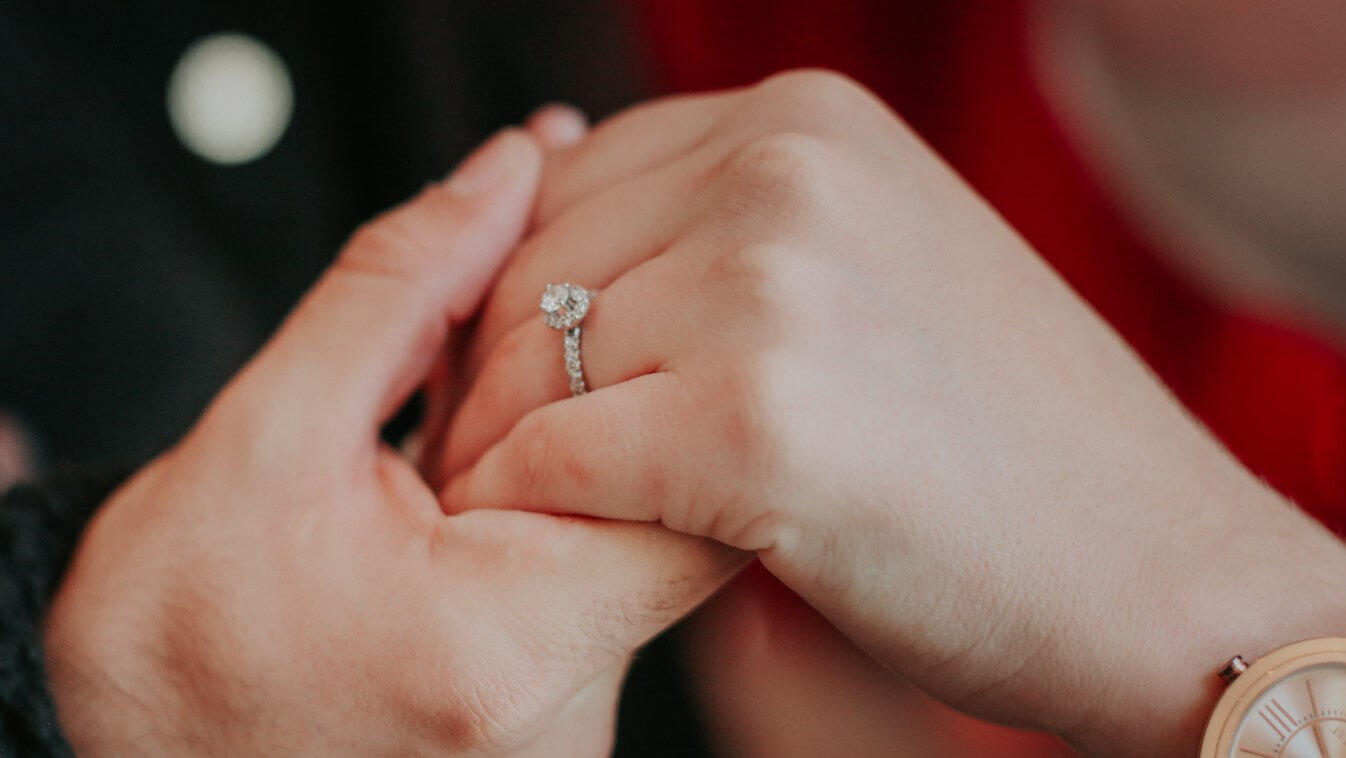
The Story Behind the Left Hand
In the United States, it’s traditional to put both rings on the left hand.
Historically, people believed that a single, long vein connects the left-hand ring finger to the heart, and that connection is the reason why Western brides and grooms choose to wear their ring there.
The tradition is thought to extend a long way back into human history – back to the Ancient Greeks, who would mark a union between two people with rings of leather or ivory and, eventually, metal. Gold was used, but rarely.
In Latin, this vein was referred to as vena amoris, which translates to ‘vein of love’. And, while this vein doesn’t really exist in the way people once believed it did, but the romance of the idea is just as real as it ever was.
Throughout history, plenty of cultures around the world have worn the wedding rings on different fingers – even the thumb. Even so, the name ‘ring finger’ for the fourth digit stuck, and the vena amoris is the most powerful justification we know of for this phenomenon.
In fact, this tradition remains so significant that western brides typically remove their engagement ring and place it on another finger on the morning of the wedding day. This is done for the soul reason that it allows the wedding band – when her partner places it on her finger – to sit at the very base of the left-hand ring finger, as close to the heart as possible.
Dispelling Misconceptions About Wearing Engagement Rings
There are no rules out there stating that engagement rings have to be worn on the left-hand ring finger – just traditions – and you can follow tradition as much or as little as you want.
There are plenty of reasons why someone might choose to wear their engagement ring on a different finger. One of the most common is the fact that many rings don’t wind up fitting perfectly the first time round and have to be resized. If you’re freshly affianced and it’s going to take a couple days before you can get your ring resized, then wearing your ring on your index or middle finger means you don’t have to put it straight back into the box, but also that you don’t need to worry about it sliding off.
But wearing your engagement ring on a different finger doesn’t have to be a matter of practicality. Any reason you have for wanting it placed on a different finger is totally fine – even if that reason is just, ‘It looks better’.
As we mentioned above, some LGBTQ+ couples prefer to do things a little differently by using the right hand ring finger.
One thing that anyone considering an alternative finger for their engagement ring should consider carefully is size. Most people will find that every one of their fingers is a slightly different size from the next. The ring finger on your dominant hand is likely to be a little larger than the ring finger on your non-dominant hand – and, while the ring finger is generally longer than the index finger, it’s also generally slimmer.
This makes it very hard if you want to pick and choose which finger you wear the ring on. Whichever finger you choose, it’s best to stick to it permanently – unless you’re willing to get the band resized.
Embracing Diversity in Engagement Traditions
It’s important to keep in mind that, while it is tradition to place the ring on the left hand, there’s no rule stating that you have to. In the US, a lot of gay and lesbian couples are now choosing to create their own tradition by placing these rings on the right hand.
Interestingly, plenty of people around the world also wear their engagement and wedding rings on the right hand. If you ever travel to Denmark, India, or Russia, for instance, you’ll probably find that you’re the odd one out.
Ultimately, whatever tradition prevails, the choice comes down to personal choice. Do you want to stick with tradition, or do you want to do what feels right and natural to you?
Wearing Your Engagement Ring After the Wedding
Many, many women will wear their engagement ring everyday – before, during, and after the wedding day.
In fact, this is probably the most common way to wear and keep your bridal set. Jewelers will always recommend that you intentionally pick out a wedding band that will sit comfortably alongside your engagement ring – which, depending on the ring’s design and the size of the center setting, can very easy or difficult.
For the bulkiest ring settings, such as the halo, finding a wedding band that sits comfortably on the finger alongside the engagement ring can be pretty trying. These days, jewelers are happy to design special wedding bands that look right alongside halo engagement rings.
But whatever you go with, there’s no rule or tradition that dictates how long you should wear your engagement ring for. It doesn’t lose all of its meaning and significance just because you’ve tied the knot – and, most importantly, it’s built from elements that are capable of withstanding decades’ worth of daily wear and tear without falling apart or losing their beauty.
The Traditions for Men Wearing Wedding Rings
Either side is perfectly fine, although, once again, the prevailing tradition within the United States is to wear the wedding ring on your left-hand ring finger.
Interestingly, the idea of men wearing wedding rings seemed to fade out of popularity – despite the fact that it was a prevalent practice in the ancient world. It wasn’t until the twentieth century, when soldiers left home to fight in the war, that men started to wear wedding bands again to remember their families back home.
Even after the wars, many men did not immediately invest into a wedding ring of their own. It’s only in the past fifty years or so that the majority of men have started consistently wearing wedding bands as a sign of their love and commitment.
Breaking Traditions: Wearing Your Engagement Ring On a Chain
This is a great idea if your job has you using your hands a lot, or if you struggle to wear a ring ‘full time’.
A lot of people worry about picking engagement rings out for a partner who is on the go a lot, or who works a physical job that would, in all likelihood, force them to take their ring off for half the day.
Wearing a ring on a chain is a good way of keeping it somewhere you can keep an eye on it, without it facing the same wear and tear it would see on the finger.
Our Expert Take
Human history is brimming with beautiful stories, superstitions, beliefs, and traditions. It’s fascinating to delve back into the past, to learn about the reasons and motivations behind traditions that, these days, are so ingrained in our daily lives that we don’t always think to question them.
But, as fascinating as history is, that doesn’t mean we need to feel any compulsion to do things the way it dictates unless we actually want to. If you think you’d be more comfortable with your ring on another finger, then go for it; if, on the other hand, you think something new and different would be a more fitting choice to represent your love, then don’t worry about what other people think is ‘right’ or ‘wrong’.
You are the only person who has to wear your engagement and wedding rings, so make your own mind up about it. If you have a particular finger in mind, however, then make sure you communicate that to your partner before they invest in an engagement ring. While ring resizing is possible, it’s definitely better to avoid it if possible; some ring designs can lose their symmetry as a result of a resize, or they can be weakened by it.
We love to hear how our readers do things a little differently – or flip tradition on its head. Focus on what’s important: a beautiful ring and a beautiful proposal – and, finally, a beautiful marriage. Everything else is just a matter of preference.
8 FAQs
- Q1: On which hand and finger should an engagement ring be traditionally worn?
A1: Traditionally, an engagement ring is worn on the left hand’s fourth finger, known as the ring finger, in many Western cultures. - Q2: Can the engagement ring be worn on the right hand?
A2: Yes, some cultures and individuals choose to wear the engagement ring on the right hand for personal or cultural reasons. - Q3: Does finger size affect the style of ring I should choose?
A3: Yes, finger size and shape can influence the style of ring. Slender fingers might suit longer diamond shapes, while wider bands can complement shorter fingers. - Q4: How do I know if a ring setting is right for my hand?
A4: Consider your hand’s size and shape. A setting should complement your hand’s proportions – not too big to overwhelm small hands or too delicate for larger hands. - Q5: Is there a practical way to choose an engagement ring for an active lifestyle?
A5: For active lifestyles, opt for secure settings like bezel or flush settings that are less likely to snag and are more durable. - Q6: How should the metal color of the ring be chosen?
A6: Choose a metal color that complements skin tone. White gold or platinum suits cooler skin tones, while yellow or rose gold works well with warmer skin tones. - Q7: What if the engagement ring doesn’t fit comfortably?
A7: Comfort is key. If the ring doesn’t fit comfortably, consider resizing or choosing a different band width or contour for a better fit. - Q8: Can engagement rings be customized to suit personal style?
A8: Absolutely! Engagement rings can be customized to reflect personal style, from the choice of diamond to the design of the setting.
Understanding what hand do you wear your engagement ring on is just the beginning. Trust Jeweler AI to find the ring that’s perfect for you!
FOLLOW-UP GUIDE SERIES


